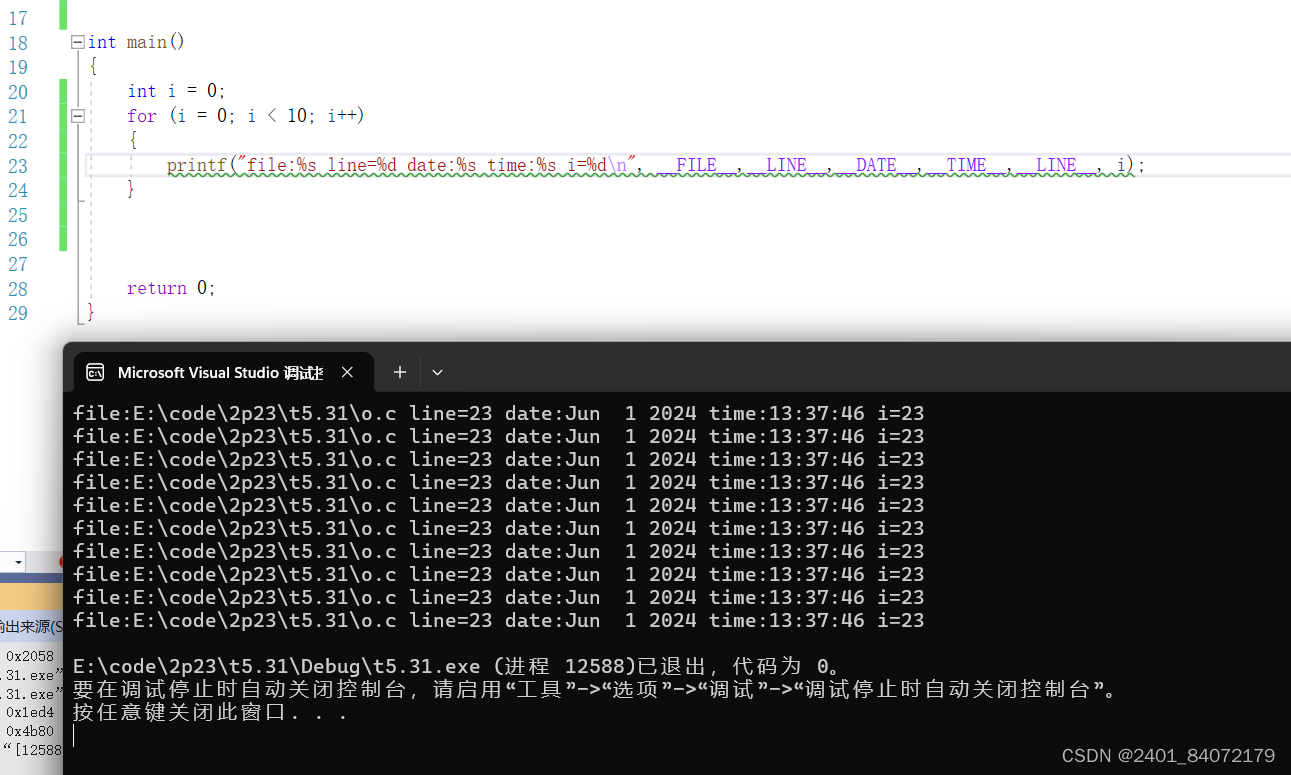@TOC
引言
面向对象编程(Object-Oriented Programming,简称OOP)是现代软件工程中不可或缺的一部分,它提供了一种组织代码的高效方式,使代码更加模块化、易于维护和扩展。Python作为一种高级编程语言,充分支持OOP的特性,使得开发者能够构建复杂而灵活的软件系统。本文将深入探讨Python中的OOP概念,包括类、对象、继承、封装、多态等,并通过具体实例加深理解。
一、类与对象
在OOP中,类是对象的蓝图,定义了对象的属性和行为。对象则是类的实例,具有类定义的所有属性和方法。
示例代码:
class Person:
def __init__(self, name, age):
self.name = name
self.age = age
def greet(self):
print(f"Hello, my name is {self.name} and I am {self.age} years old.")
# 创建Person类的实例
john = Person("John Doe", 30)
john.greet() # 输出: Hello, my name is John Doe and I am 30 years old.
二、继承
继承允许一个类(子类)继承另一个类(父类)的属性和方法,促进代码复用和模块化。
示例代码:
class Student(Person):
def __init__(self, name, age, grade):
super().__init__(name, age)
self.grade = grade
def study(self):
print(f"{self.name} is studying hard!")
# 创建Student类的实例
alice = Student("Alice Smith", 20, "A+")
alice.greet() # 输出: Hello, my name is Alice Smith and I am 20 years old.
alice.study() # 输出: Alice Smith is studying hard!
三、封装
封装是隐藏对象的内部状态,仅通过公共接口与其交互。这有助于保护数据,防止外部代码意外修改。
示例代码:
class BankAccount:
def __init__(self, balance=0):
self.__balance = balance
def deposit(self, amount):
if amount > 0:
self.__balance += amount
def withdraw(self, amount):
if amount > 0 and amount <= self.__balance:
self.__balance -= amount
def get_balance(self):
return self.__balance
account = BankAccount()
account.deposit(1000)
account.withdraw(500)
print(account.get_balance()) # 输出: 500
四、多态
多态允许子类重写父类的方法,使得子类对象可以像父类对象一样被使用,提高代码的灵活性和可扩展性。
示例代码:
class Animal:
def make_sound(self):
pass
class Dog(Animal):
def make_sound(self):
print("Woof woof!")
class Cat(Animal):
def make_sound(self):
print("Meow meow!")
def animal_sound(animal: Animal):
animal.make_sound()
dog = Dog()
cat = Cat()
animal_sound(dog) # 输出: Woof woof!
animal_sound(cat) # 输出: Meow meow!
五、组合与聚合
组合和聚合是另一种实现代码复用的方式,通过将对象组合在一起,形成更复杂的功能。
示例代码:
class Engine:
def start(self):
print("Engine started.")
class Car:
def __init__(self):
self.engine = Engine()
def start(self):
self.engine.start()
print("Car started.")
car = Car()
car.start() # 输出: Engine started. Car started.
结论
通过本文,我们不仅复习了Python中OOP的基本概念,如类、对象、继承、封装、多态,而且还通过具体示例代码加深了理解。掌握OOP是成为一名高效、专业程序员的关键,它能帮助你构建出既健壮又优雅的软件系统。



![[Shell<span style='color:red;'>编程</span>学习路线]——<span style='color:red;'>深入</span><span style='color:red;'>理解</span>Shell<span style='color:red;'>编程</span><span style='color:red;'>中</span><span style='color:red;'>的</span>变量(<span style='color:red;'>理论</span><span style='color:red;'>与</span><span style='color:red;'>实例</span>)](https://img-blog.csdnimg.cn/direct/3b7ecfb50593488a85d6a18de8a57bc8.gif)

































